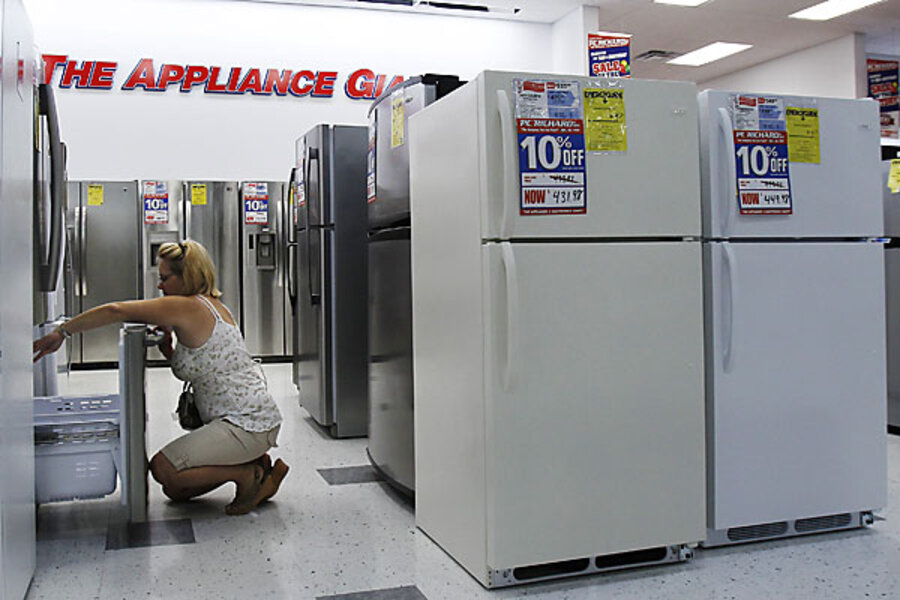There are a number of different styles of refrigerators, each with their pros and cons. So think through what’s most important to you: Price? Convenience? Style?
• Top mount fridges and freezers are the most common and usually the least expensive. As the name implies, the freezer is on top and the fridge below. Most models allow for doors that open left or right depending on the customer’s preference. While this fridge usually fits the best in a smaller home, its biggest downfall is also its compact size – generally around 18 cubic feet.
• Side-by-side refrigerators are another popular style, with the fridge and freezer alongside one another. Typically, the fridge takes up two-thirds of the space and the freezer the other third. These fridges are often praised for their modern look and definitely have more space, but they do present a common problem – the shelves are quite narrow, which makes fitting some items difficult.
• Bottom mount models have been steadily increasing in popularity for some time. The fridge section is at the top and below is typically a pullout freezer. People appreciate that their most used items are available without having to bend over, but the drawerlike function of the freezer means your frozen food frequently get buried, as new items get piled on top.
• French door refrigerators are the current trend. And they're not much different from bottom mount models except that the doors open from the center, just like a standard French door would. The freezer drawer is still below and everything else is relatively the same. The sleek appearance of this style is really appealing, but families with children might want to avoid it as the doors don’t close as easily.
You’ll also need to pick a color and finish, whether you want that stainless steel look, black or something a little more conventional. If you’re not sure on what to choose, don’t stress. These days a new finish is as simple as purchasing specially designed magnets that cover your whole fridge and give it an entirely new look.







